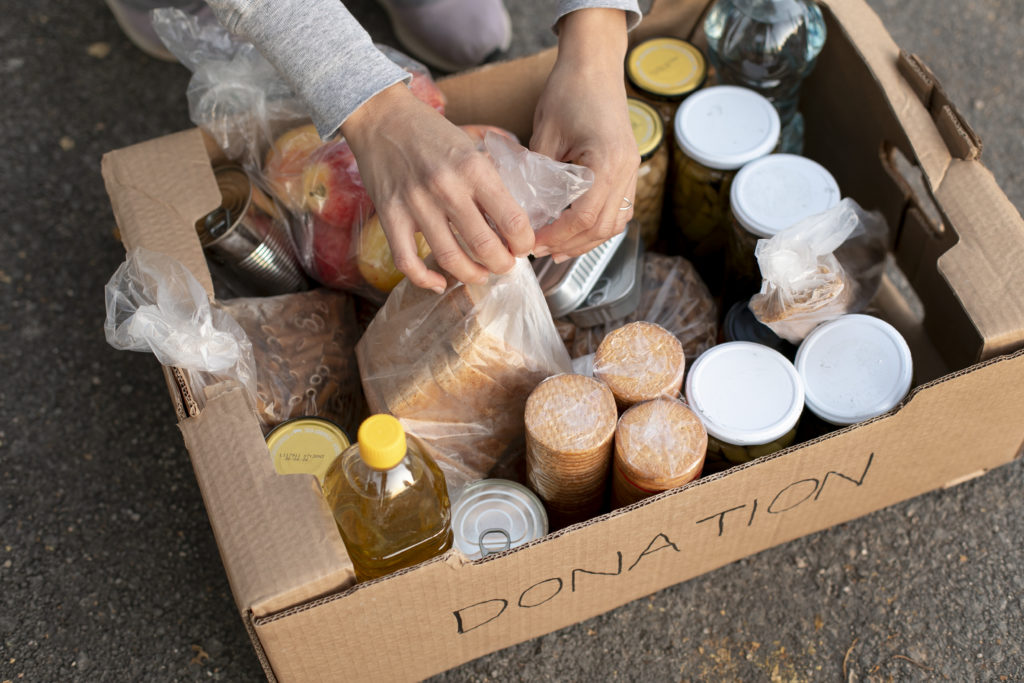
In 2021, 1 in 10 households experienced food insecurity. Approximately 4% of families also reported reduced intake or skipped meals due to lack of access to affordable food. To address this growing concern, the Biden administration hosted the White House Conference on Hunger, Nutrition, and Health in September. The timely summit highlighted the intersection of food insecurity and nutrition-related diseases that afflict millions of Americans. (These include type 2 diabetes, obesity, and heart disease.) And it led to the implementation of a National Strategy, which includes increasing access to nourishing foods. The overarching goals of the Strategy are to end hunger and improve healthy eating. What will success look like? Fewer Americans living with diet-related diseases by 2030.
With this new National Strategy in place, we embark on the final weeks of 2022. The holiday season invokes a greater desire to help our neighbors experience a season of joy, peace, and sustenance. Local food pantries appreciate (and desperately need) our help and welcome any support that enables them to meet their goals. But let’s go beyond helping our community be well-fed this season. Let’s make sure everyone is well-nourished too, with greater access to nutritious foods. By doing so, you’re not just feeding someone today, you’re also helping them live healthier tomorrow. Here are some questions to ask as we support our communities this holiday season:
Is there a reduced sodium or lower sugar option?
When you donate food, remember that the items on food pantry shelves are going to be someone’s primary diet. With this in mind, seek reduced sodium and lower sugar options that may help someone meet their nutrition goals. A diet lower in sodium reduces the risk of hypertension and is part of an overall heart-healthy diet. Decreasing sugar (particularly added sugar) helps control blood sugar and manage diabetes. The good news is that lower salt and sugar options don’t typically cost more. Without spending more, you’ll help more recipients follow a diet that’s aligned with nutritional recommendations.
Does this food offer whole grains?
Choosing food options with whole grains also helps someone improve their diet. Foods with whole grains are more nutrient-dense and fiber-rich, which aids in lowering cholesterol. By providing a more nutritious option, you’ll significantly boost the overall quality of someone’s diet.
Can you include a fruit or vegetable in your donation?
Most Americans do not consume enough fruits and vegetables. Guiding Stars earning canned or packaged fruits and vegetables are just as beneficial as fresh. If possible, avoid sweetened fruit packed in syrup, opting for 100% fruit juice instead to avoid added sugar.
Is there a Guiding Stars earning option?
In some cases, there may be a Guiding Stars earning option available that is equally affordable and accessible. Guiding Stars earning foods align with the goals of finding lower salt and sugar foods. They also have more vitamins, minerals, fiber, and whole grains.
Food Pantry Donation List (*LS= low sodium):
- LS* chicken, beef, or vegetable broth
- Brown rice & whole grain pasta
- LS* boxed instant potatoes
- Canned light tuna
- Vegetable oil
- Unsweetened applesauce
- No added sugar tomato sauce
- LS* canned vegetables & beans
- 100% fruit juice (no added sugar)
- Peanut butter
- Powdered nonfat milk
- Plain oatmeal & unsweetened ready-to-eat cereal